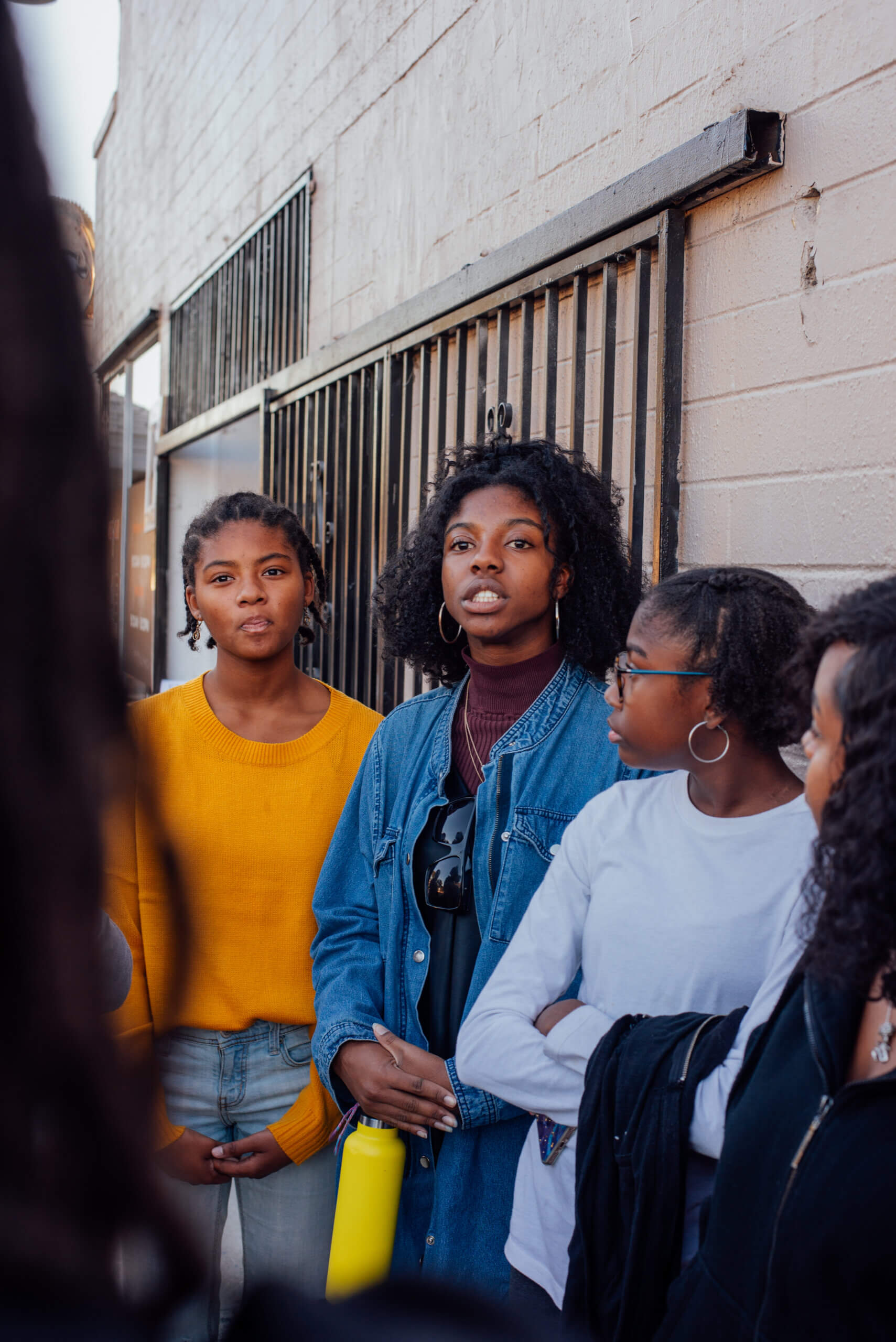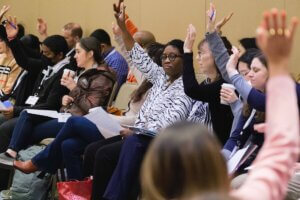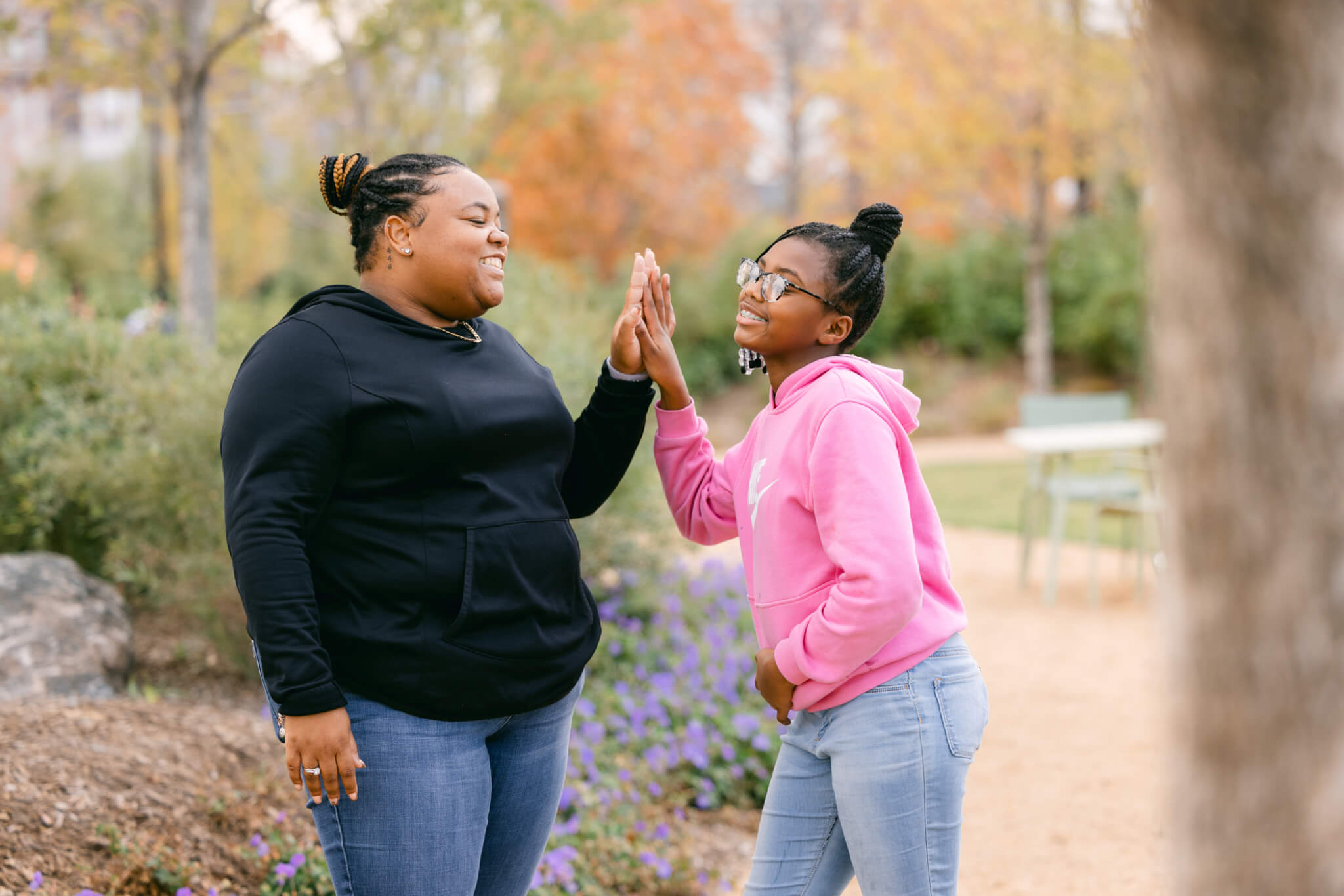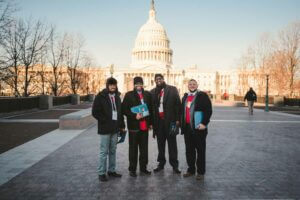Critical Mentoring
Supplement to the Elements of Effective Practice for Mentoring™
Why Critical Mentoring
Critical mentoring provides the tools we need as mentors and youth workers to create programmatic spaces that support young people as they develop into themselves, that allows them to ask difficult questions, that provides them with opportunities to find their own voice, and that supports them as they work toward a better future.
The History
The concept of critical mentoring was not born of critique alone, it was also born of need. All too often mentors provided through programs were being cited as a type of savior for youth experiencing marginalization, and these programs were being touted as a fix-all for social ills. But, at the root of this type of structured mentoring as a concept was an identification with white supremacist ideas, ideas that all too often saw young people experiencing marginalization as needing to be fixed. The singular focus on young people was both admirable and problematic; it helped mentors to feel good about supporting young people but did very little to rectify the conditions young people were being forced to navigate. That strategy makes sense to so many of us. It seems easier to solve a problem, one young person at a time, with a hopefulness that by “fixing” young people we fix the future. However, “fixing” young people ignores the historical and present context of racism, poverty, homoantagonism, and other pressing issues our society is confronted with.
Critical mentoring provides the tools we need as mentors and youth workers to create programmatic spaces that support young people as they develop into themselves, that allows them to ask difficult questions, provides them with opportunities to find their own voice, and that supports them as they work toward a better future. Still rooted in this work are ideas that we must acknowledge how race, class, gender, ability, and sexuality impact our young people and the ways that we work with them, that mentoring must be shifted away from its traditionally hierarchical roots and become something more collaborative and liberatory and that youth should always be centered in their own work. Critical mentoring is meant to create a multigenerational community of love and support so that we can collectively work to build something better together.
Connections to Today
At the time of writing critical mentoring, I was summoning the names and faces of young people like Tamir Rice and Mike Brown to name a few. At the time of writing this document, I am summoning the names and faces of young people like Ma’Khia Bryant and Daunte Wright. It has already been four years since the initial critical mentoring book was written and the names of young people violently impacted by racist white supremacy are still too many to list, thus the continued need for this work. Although the names and faces have changed, the white supremacist violence that killed these young people has not.
Our context has changed very little. We may be having more conversations about the historical and present lack of equity, but we are still at a moral impasse in terms of facing the issues. We are in a moment where it is more than obvious that the country is at odds with itself. There is more visible tension — a part of our country wants to confront race and our history with it, another part of our country prefers not to speak about it at all. Part of us are working to build a better future, the other part of us wants to relegate ourselves to the past. The struggle is in the streets, it is in our homes, our workplaces, and impossible to hide from. As adults, we are struggling to manage the barrage of information and misinformation coming our way, processing what we know, feel, and experience. Imagine being twelve years old at this moment. Imagine having to make sense of the violence, the misinformation, the dueling opinions about everything. Now imagine not having someone who can support you to make sense of these things as you work to mature and develop and ultimately become a contributing member of our society.
At the time Critical Mentoring was published in 2017 we were saying the names of young people like Tamir Rice and Mike Brown, to name a few. Now, we are saying the names of young people like Ma’Khia Bryant and Daunte Wright. Our young people are still being asked to thrive in environments that are toxic.
It has been said “nothing about us without us” and that statement is apropos for mentoring programs doing critical work. This means making space for youth voices and giving them meaningful opportunities to build programs that work best for them.
Since mentoring is concerned with the growth and development of young people, building youth voices, power, and choice should be an essential aspect of that work. We must create leadership opportunities for them to lead and support their leadership development.
At the time Critical Mentoring was published in 2017 we were saying the names of young people like Tamir Rice and Mike Brown, to name a few. Now, we are saying the names of young people like Ma’Khia Bryant and Daunte Wright. Our young people are still being asked to thrive in environments that are toxic.
It has been said “nothing about us without us” and that statement is apropos for mentoring programs doing critical work. This means making space for youth voices and giving them meaningful opportunities to build programs that work best for them.
Since mentoring is concerned with the growth and development of young people, building youth voices, power, and choice should be an essential aspect of that work. We must create leadership opportunities for them to lead and support their leadership development.
About This Resource
This supplement came as a result of conversations and “conspirations” between Dr. Elizabeth Santiago, formerly the chief program officer for MENTOR, and Dr. Torie Weiston-Serdan, chief visionary officer of Youth Mentoring Action Network, and author of Critical Mentoring: A Practical Guide. We recognized that it was imperative to establish an accessible, working collection of information and ideas that constitute a framework for critical mentoring. The objective was to provide organizations across the field of mentoring with resources, scholarship, and practices that respond to the acute and enduring struggles of marginalized youth — and to equip them to do so. Rather than creating a static document, we wanted to publish this living, breathing website to increase access, encourage growth and dynamicity, and enable crowdsourcing. This resource was created in community with comrades who have implemented, researched, or experienced critical mentoring. We hope to collaboratively expand and adjust this resource as the concept and practice of critical mentoring involves new and different people, spaces, and ideas.
It has been an honor to work alongside researchers like Mike Garringer, Bernadette Sánchez, Bianca Baldridge, and Rod Watts who could delve into and create the academic scholarship we all need to better understand the concept of critical mentoring and why we need to engage it in our work.
It was also amazing to work alongside practitioners like Marcus Strother, Sadiq Ali, and Stacey Thompson, who could speak to how they have institutionalized critical mentoring practices and could work alongside us to think about what it should look like in the future.
Torie Weiston-Serdan
Thanks to Our Funder
This work would not be possible without the generous investment of the Citi Foundation. We thank them for their support of our work and their belief in mentoring as a tool for equity and a more just world.











